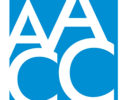Adding culturally responsive strategies into STEM
By Madeline Patton
July 6, 2022
Focusing on students’ assets rather than their deficits is a critical aspect of the culturally responsive instructional strategies that seven SUNY Westchester Community College (SUNY WCC) faculty members added to their teaching repertoire this past year.
To Juan Rodriguez, Jr., a cybersecurity professor and principal investigator of the HSI ATE Hub 2: Culturally Responsive Technician Education project at Westchester, the asset-oriented pedagogy developed by researchers at Arizona State University’s Center for Broadening Participation in STEM boils down to being attentive to students’ needs.
“Each student is different. And if we treat them, not differently, but as individuals then I think we end up reaching out to them more. And that would bring up engagement,” he said.
The HSI ATE Hub 2 plan to scale the culturally responsive pedagogy in technician education courses at Westchester is a collaborative research project funded by Advanced Technological Education grants from the National Science Foundation to SUNY WCC and the center at Arizona State University. Mentor-Connect, an ATE project based at Florence-Darlington Technical College, produces the HSI ATE Hub 2 professional development modules with the Arizona center for the Westchester faculty. The American Association of Community Colleges is a Mentor-Connect partner.
Early observations
Although it’s too early to tell how the addition of culturally responsive strategies in STEM courses will impact persistence and graduation rates, Rodriguez and Belknap shared promising anecdotal evidence of students’ increased engagement in classroom activities.
Rodriguez said a majority of his spring 2022 students told him that his course was the best class they had during the semester. More students than usual asked him what courses he would teach in summer and fall semesters. He said that as students’ engagement increases “of course the grades go up; they don’t want to disappoint you.”
“We know that more engaged students are persistent. We know that more engaged students are more likely to graduate. So we’re building the faculty expertise … and we’re trying to build our base and develop a level of expertise in the faculty at Westchester Community College so that this can be widespread,” explained Sarah Belknap, a math instructor who is a leader among the first cohort of seven teachers to participate in the project.
She and Rodriguez are recruiting seven more Westchester STEM faculty members for a second cohort of faculty who will implement the asset-oriented teaching and learning strategies in fall 2022. Westchester faculty feedback on the first module influenced the second module, which focused on practical steps for implementing culturally responsive instruction, and the third module, which included an industry partner that hires SUNY WCC technical program graduates.
A better approach
Belknap describes the spring 2022 semester as her best-ever for teaching. She found that an “asset-based mindset – this way of viewing your students – is incredibly freeing and makes your job a lot more fun. If you’re not focused on catching students for doing wrong or training them for a harsh real world, you can focus instead on the parts of your job that are way more fun: educating, participation, engaging with students. The more credit you give your students, the more they give back to you. And it’s just this wonderful, positive feedback loop.”
In addition to defining an asset-based mindset as “thinking about people in terms of their strengths, and how they can lead to success,” the Center for Broadening Participation in STEM places the necessity for change on institutions and educators “to harness students’ assets and create an environment that fosters reproducible success.”
In the free webinar “Culturally Responsive Technician Education: Asset or Deficit Models,” Rodriguez and Belknap describe several asset-focused strategies that build on students’ capital. These strategies leverage students’ aspirations to improve their lives by learning new skills; their connections to family and community; their knowledge of multiple languages, and their cultural background to help them navigate college successfully.
In a recent interview, Rodriguez described how his practice of taking students’ “pulse” by having them introduce themselves each day and say how there are feeling provided helpful insights that informed his interactions with students. For instance, he learned the reason one man was always late to his class on Friday mornings: that was the day he takes his daughter to school.
“If he’s making that effort to take his daughter to school and then come to school himself, that is the person I need to grab and say ‘Hey, how do you want me to help? How do you want to be successful this semester?’ And I’ll help you,” he said.
Even before becoming involved in the initiative, Rodriguez and Belknap disagreed with instructors who do not allow students to enter their classrooms or labs after classes start. Both experienced the stress of depending on public transportation to get to college classes and rigid practices that some instructors use “to prepare students for the real world.”
There’s more to the story! Read the full article in CC Daily.



